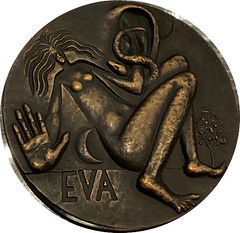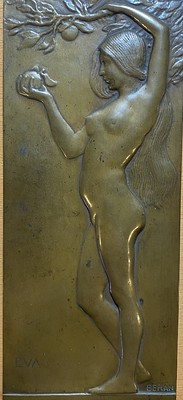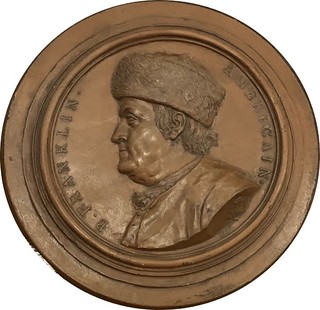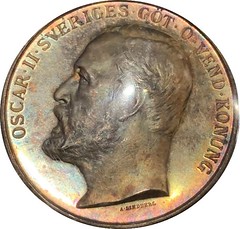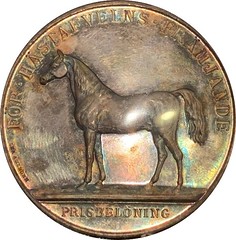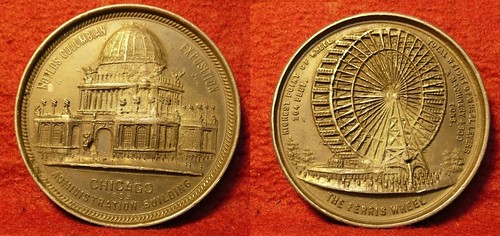
PREV ARTICLE
NEXT ARTICLE
FULL ISSUE
PREV FULL ISSUE
V25 2022 INDEX E-SYLUM ARCHIVE TOM KAYS NUMISMATIC DIARY FOLLOW-UPLast week, Tom Kays recounted events at the October dinner of our Northern Virginia numismatic social group, Nummis Nova. Here are some additional notes from attendees, and answers to last week's quiz questions. -Editor Dave Ellison writes: "John Radel provided an excellent review of the Oscar II silver presentation medal that I brought along. I couldn't do better job myself. The other two items I passed around were the 1968 German Apollo 8 medal and the 1930J German (Weimar Republic) 5 Reichmark. The Apollo medal is a guilty favorite of mine, being minted in Germany and all. Just quirky enough to hold my interest. The 5 Mark is a one year issue (very low mintage of 33,000) commemorating the Graf Zeppelin's 1929 around-the-world flight. Taking off from Lakehurst Naval Air Station, New Jersey, and landing there to end the journey was the fastest circumnavigation of the globe at the time. I very much enjoyed the evening of food, drink and "coinsy" conversation. Conversation down at my end of the table ranged from Wayne Herndon's recounting of Wizard's recent business activities and upcoming events and shows to Roger Burdette's discussion of current and past research projects and his suggestion of perhaps starting a "writer's table" at some local and regional shows were numismatic writers could attend and interact with attendees and collectors regarding their publications and all things numismatic. I also enjoyed chatting with Mike Packard and learning about his colonial Massachusetts and Connecticut coin collections. Jonas Denenberg even popped down our way toward the end of the evening to add some levity and youthful insight!! " Here are the mystery items from last week. -Editor The rest of the story for Bronze Medal – Item #1: Jon Radel writes:
"I brought it to dinner largely as a contrast, or foil even, or vice versa (sometimes I don't think too deeply about what I grab as an interesting pairing on my way out the door) to an earlier plaque of Eva I acquired much more recently from Hungary. My interest in items from Hungary is more recent, and I acquired this plaque only in September, so I have less to pass along about it. Sometimes the research lags the acquisition of pretty things--many of you probably understand how this goes. It's an undated plaque by Berán Lajos (1882-1943). A one-sided, cast plaque of 185 by 79 mm in bronze.
Right: Bronze
The rest of the story for Terracotta – Item #2: This four and a half inch (11 centimeters) diameter
terracotta, high relief roundel of Benjamin Franklin with legend: The rest of the story for Silver Medal – Item #3: Jon Radel writes that he didn't bring it, yet he remarks that the Swedish government was a great proponent of horse breeding, specifically to ensure a supply of suitable horses for cavalry use, and as such sponsored this as a prize medal. The medal pictured is by Johan Adolf Lindberg (1839-1916), or more commonly Adolf Lindberg, who has signed this particular medal as "A. Lindberg." Lindberg ran his own studio in Sweden starting in 1864, though it was a number of years before he started producing medals. In late 1897 he was appointed to engraver at the royal mint, after the death of Lea Ahlborn, and as such engraved all official medals. See [J Adolf Lindberg, https://sok.riksarkivet.se/sbl/artikel/10414, Swedish biographical lexicon (art by Ulla Ehrensvärd), retrieved 2022-10-20] for a biography. The medal itself, and the very similar earlier medals by Lea Ahlborn, not to mention later medals with the bust of Gustav V, are relatively common. I found examples of several varieties for sale on eBay, though they largely aren't nearly as nicely toned as the example we saw at dinner. The rest of the story for Bronze Plaque – Item #4: This large (14.5 x 18.8 cm) bronze plaque of Henry Wadsworth Longfellow, dated 1911, was made for the Grolier Club by John Flanagan who would go on to create the Washington Quarter design used from 1932 to 1998. The Grolier Club was founded in 1884 as a society of bibliophiles, antiquarians, and graphic artists in America. The Grolier Club promotes the study, collecting, and appreciation of fine books and works on paper.
The rest of the story for Bronze Medal – Item #5: This is an 1893 bronze, Chicago World's Fair medal for
But Ferris had not only been challenged to think big; the huge attendance expected at the fair inspired him to bet big. He spent $25,000 of his own money on safety studies, hired more engineers, and recruited investors. On December 16, 1892, his wheel was chosen to answer Eiffel's tower at the 1889 Paris Exposition. It measured 250 feet in diameter, and carried 36 cars, each capable of holding 60 people.
More than 100,000 parts went into Ferris' wheel, notably an 89,320-pound axle that had to be hoisted
onto two towers 140 feet in the air. Launched on June 21, 1893, it was a glorious success. Over the next
19 weeks, more than 1.4 million people paid 50 cents for a 20-minute ride and access to an aerial
panorama few had ever beheld. But when the fair gates closed, Ferris became immersed in a tangle of wheel-related lawsuits about debts he owed suppliers and that the fair owed him. In 1896, bankrupt and suffering from typhoid fever, he died at age 37. A wrecking company bought the wheel and sold it to the 1904 Louisiana Purchase Exposition in St. Louis. Two years later, it was dynamited into scrap. Tom submitted a sixth Bonus Item that slipped thru the cracks and didn't make it into the last issue. Here it is. -Editor Steve Bishop writes: "It wouldn't be a Nummis Nova dinner without at least one toned Morgan dollar. This is a beautiful 1881-San Francisco, a date known for its superb quality, with a nice crescent of rainbow toning produced by the overlap of another coin as it sat in a sulfur-impregnated mint bag.
To get scientific, the formula: 4Ag + 2H2S + O2 = 2Ag2S + 2H2O applies.
"Ag2S is silver sulfide, the layer formed on the surface of metal. O2 is oxygen, and H2S hydrogen-sulfide which is present in the atmosphere. While black in nature, silver-sulfide forms in layers of various thicknesses which creates colors seen through human eyes, through a process called Thin Film Interference Effect (TFIE). A perfect example of what this means is that we see rainbows in soap bubbles based on the angle viewed. TFIE ranges in scale from light-yellow through green. To avoid confusion, this is the scale used for silver-sulfide thickness and not the wavelength scale for human eyesight, where red is at the end. Thereby, green is the final stage before a coin looks black and ruined. Next in the necessary brew for toning are gases in the air. Specifically, sulfur, combined with moisture accelerates the process. Trace amounts of sulfur may occur from cigarette smoke or appliances running on natural gas. In conjunction with the atmosphere, contaminants contact the surface of the coin from materials contain hydrogen-sulfide such as paper, cardboard, tissue-paper, manila envelopes, canvas, etc. Add heat and humidity (2H2O) for rainbows to appear."
To read the earlier E-Sylum article, see:
THE BOOK BAZARREBowers Series.The info-packed reference addresses both the investor and the collector of this popular bullion series. 384 pages. Available December 2022. Order your copy online at Whitman.com , or call 1-800-546-2995. Wayne Homren, Editor The Numismatic Bibliomania Society is a non-profit organization promoting numismatic literature. See our web site at coinbooks.org. To submit items for publication in The E-Sylum, write to the Editor at this address: whomren@gmail.com To subscribe go to: https://my.binhost.com/lists/listinfo/esylum All Rights Reserved. NBS Home Page Contact the NBS webmaster 
|

